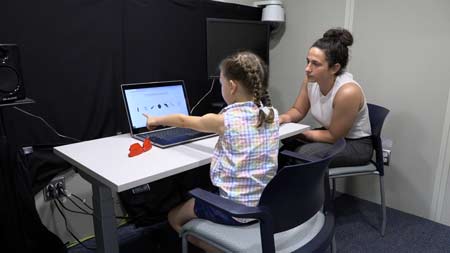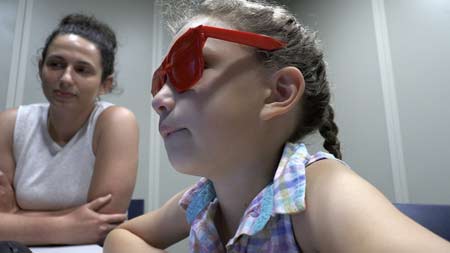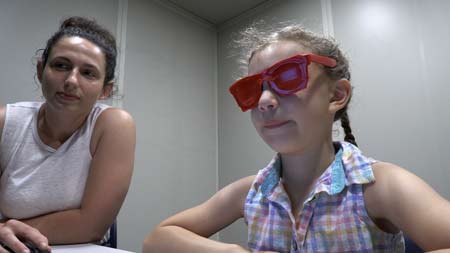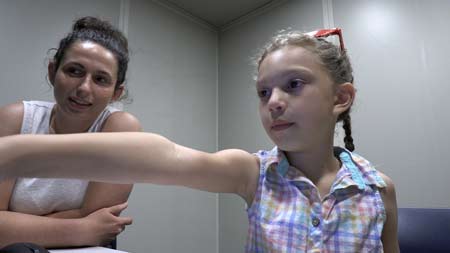Let the Children Talk (to Themselves) - It Helps Memory
Monday, July 19, 2021
It's the middle of your remote workday. You leave your home office, but the moment you enter the kitchen, you've completely forgotten what you wanted in the first place. You muse aloud "why did I come in here?" and proceed to talk yourself through the sequence of events that led to your arrival in the kitchen. Adults commonly use these self-talk strategies to remember and problem solve. However, in these days of remote learning, you may have noticed that your children's memory lapses are less often accompanied by self-talk. In fact, it's long been thought that children younger than 7 are unable to use a self-talk tool called rehearsal to help them remember lists of things. But thanks to a modernized version of five-decades-old study, we now have a much better idea of when rehearsal develops.

Study participants point to the pictures, just as they did in the original Flavell study.
In 1966, Flavell, Beach, and Chinksy showed 60 children --5, 7, and 10-year-olds -- sequences of hand drawn pictures. After each sequence, the researchers laid out the pictures and asked the child to point to the pictures in the order. Meanwhile, another researcher discretely watched the child's mouth for subtle movement that indicate the child was talking to herself. In the original study, only the 7- and 10-year-olds spontaneously took advantage of rehearsal to help remember the lists.

The participants vision was obstructed during the
delay period prior to recall, just as was done in the 1966 study.
Fast forward to 2017. Dr. Emily Elliott of Louisiana State University, Dr. Candice Morey of Cardiff University and Dr. Angela AuBuchon of Boys Town National Research Hospital® struggled to reconcile the results from 1966 with new research from their colleague Dr. Chris Jarrold at the University of Bristol. Dr. Jarrold used different methods than the 1966 study, but his results suggested that 5- and 6-year-olds might also be using very simple forms of rehearsal on memory tests.

Care was taken to replicate the obstruction of vision during delay periods.
Drs. Elliott, Morey, and AuBuchon decided to find out if the inconsistency could be explained by either the differing methods or the passage of time, so they proposed to lead a multi-site registered replication report of the 1966 study. After their proposal was accepted by the journal Advances in Methods and Practices in Psychology Science (AMPPS), they made all of their materials – from the study protocol and experimental program to the data analysis code – available on Open Science Framework (OSF). They invited researchers around the world to conduct the experiment in the own labs and contribute data. Ultimately, the replication included 977 children from 17 labs – including the three lead authors' and Dr. Jarrold's – representing not only the United States and the United Kingdom, but also Turkey, Norway, New Zealand, Germany, Costa Rica, Switzerland, Italy, and Austria.

Study participants from 17 sites worldwide were observed as they provided verbal labels for items presented on the computer screen.
Careful attention was paid to preserving key elements of the original study. However, the replication was modernized to reflect current research practices. For example, pictures were presented on a computer to standardize the experiment across of the labs. They also video recorded the children, when possible, to assure that lip movements were reliably monitored. The new study also included a subset of 6-year-olds to better asses the presumed transition from non-verbal memorization in younger children to rehearsal in older children.
The replication upheld the core of Flavell and colleagues 1966 finding – fewer 5- and 6-year-olds than 7- and 10-year-olds used self-talk. Importantly, though, many more 5- and 6- year-olds used self-talk than would have been predicted by the original 1966 study. With the expanded study size, 75% of 5-year-olds were found to verbalize as a memory tool at least part of the time, versus 10% in the Flavell study. The updated research also suggests that increased verbalization led to increased memory span performance in the participating children regardless of the participants' age. The benefits of pointing and verbalizing in these memory exercises were particularly prominent in 6-year-olds, who were added to the replication study and were not present in Flavell's original study.
Click here to read the newly published replication study.
https://doi.org/10.1177/25152459211018187
